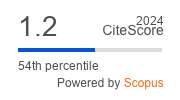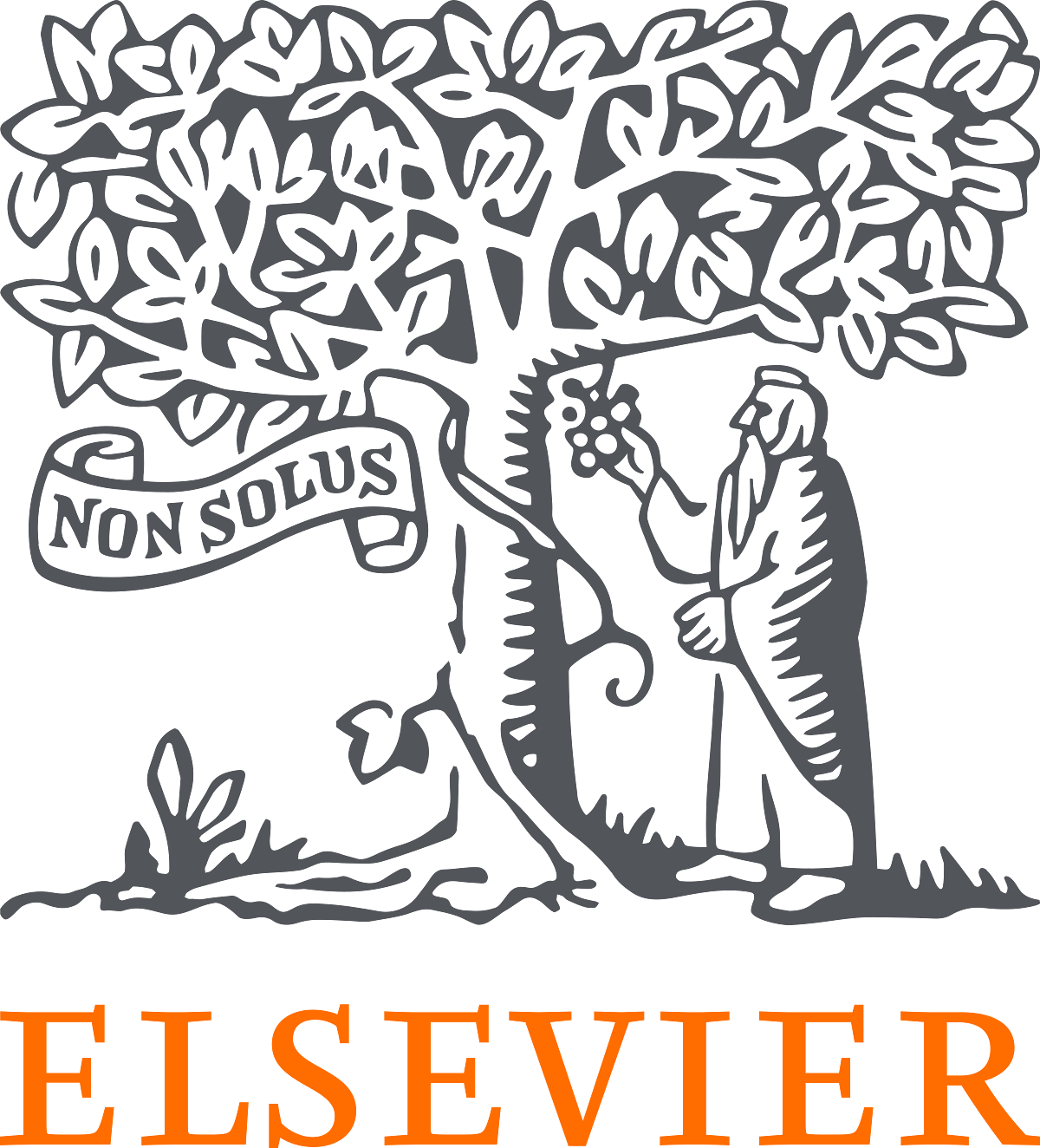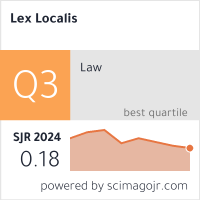Sooblikovanje lepše soseske: zakaj sodelujemo v razvojnih projektih lokalnih skupnosti?
DOI:
https://doi.org/10.4335/15.1.111-132(2017)Ključne besede:
sooblikovanje, motivacija prebivalcev, razvoj skupnosti, lokalna raven upravljanja, BelgijaPovzetek
Sooblikovanje se pogosto obravnava kot rešitev za izboljšanje kakovosti storitev in učinkovitosti proizvodnje, kljub temu pa so raziskave o razlogih, zakaj prebivalci sodelujejo pri oblikovanju in/ali opravljanju javnih storitev, še vedno omejene le na določene sektorje. V prispevku proučujemo različne motivacije prebivalcev, ki so obravnavane v literaturi. Oblikovali smo dve različni kategoriji motivacije, in sicer osebno in posredno. Prek vodene raziskave smo zbrali podatke o teh različnih motivacijah na belgijskem primeru v neraziskanem okolju razvoja skupnosti. Rezultati kažejo, da so celo v primeru razvoja skupnosti, kjer so za privabljanje k sodelovanju prebivalcev v ranljivem socialno gospodarskem položaju uporabljene materialne spodbude, razlogi za sooblikovanje bolj raznoliki in zapleteni od enostavne maksimizacije koristi.
Literatura
Alford, J. (2009) Engaging public sector clients, From Service Delivery to Co-production. Houndmills (Hamps and New York, NY: Palgrave Macmillan).
Alford, J. (2011) Public value from co-production by clients, In: Benington, J. & Moore, M. (eds.) Public value: theory and practice (London: Palgrave Macmillan).
Asquer (2012) Co-investment in co-production of public services: Are clients willing to do it?, Workshop on "Co-production in public services: the state of the art", Corvinus University, Budapest.
Blakeley, G. & Brendan, E. (2009) Who Participates, How and Why in Urban Regeneration Projects? The Case of the New 'City' of East Manchester, Social Policy & Administration, 43(1), pp. 15-32, doi: 10.1111/j.1467-9515.2008.00643.x.
Bovaird, T., Van Ryzin, G. G., Loeffler, E. & Parrado, S. (2015) Activating Citizens to Participate in Collective Co-Production of Public Services, Journal of Social Policy, 44(01), pp. 1-23, doi: 10.1017/S0047279414000567.
Bovaird, T. & Loeffler, E. (2012) From engagement to co-production: The contribution of users and communities to outcomes and public value, Voluntas: International Journal of Voluntary and Nonprofit Organizations, 23(4), pp. 1119–1138.
Boyle, D., Clark, S. & Burns, S. (2006) Hidden Work: Co-production by People Outside Paid Employment (York: Joseph Rowntree Foundation).
Brady, H. E., Verba, S. & Lehman Schlozman, K. (1995) Beyond Ses: A Resource Model of Political Participation, The American Political Science Review, 89(2), pp. 271-294, doi: 10.2307/2082425.
Brandsen, T. & Helderman, J.-K. (2012) The Trade-Off Between Capital and Community: The Conditions for Successful Co-production in Housing, Voluntas, 23(4), pp. 1139-1155, doi: 10.1007/s11266-012-9310-0.
Brandsen, T. & Honingh, M. (2015) Distinguishing Different Types of Coproduction: A Conceptual Analysis Based on the Classical Definitions, Public Administration Review: 427-435, doi: 10.1111/puar.12465.
Brandsen, T., Trommel, W. & Verschuere, B. (2014) Manufactured Civil Society: Practices, Principles and Effects (London: Palgrave).
de Graaf, L., van Hulst, M. & Michels, A. (2015) Enhancing Participation in Disadvantaged Urban Neighbourhoods, Local Government Studies, 41(1), pp. 44-62, doi: 10.1080/03003930.2014.908771.
Debruyn, P. & De Bisschop, A. (2013) Transitie: de meesterzet van de ideologie?, Oikos, 65, pp. 46-62.
Denters, B. & Klok, P.-J. (2010) Rebuilding Roombeek: Patterns of Citizen Participation in Urban Governance, Urban Affairs Review, 45(5), pp. 583-607, doi: 10.1177/1078087409356756.
Durose, C. (2011) Revisiting Lipsky: Front-Line Work in UK Local Governance, Political Studies, 59(4), pp. 978-995, doi: 10.1111/j.1467-9248.2011.00886.x.
Fledderus, J. & Honingh, M. (2016) Why people co-produce within activation services: the necessity of motivation and trust – an investigation of selection biases in a municipal activation programme in the Netherlands, International Review of Administrative Sciences, 82(1), pp. 69-87, doi: 10.1177/0020852314566006.
Frieling, M. A., Lindenberg, S. M. & Stokman, F. N. (2014) Collaborative Communities Through Coproduction: Two Case Studies, American Review of Public Administration, 44(1), pp. 35-58, doi: 10.1177/0275074012456897.
Fung, A. (2004) Empowered Participation: Reinventing Urban Democracy (New Jersey: Princeton University Press).
Head, W. A. (1979) Community Development in Post Industrial Society: Myth or Reality? Community Development: Theory and Method of Planned Change (New Delhi: Vikas Publishing House).
Jakobsen, M. (2013) Can Government Initiatives Increase Citizen Coproduction? Results of a Randomized Field Experiment, Journal of Public Administration Research and Theory, 23(1), pp. 27-54, doi: 10.1093/jopart/mus036.
Jakobsen, M. & Calmar Andersen, S. (2013) Coproduction and Equity in Public Service Delivery, Public Administration Review, 73(5), 704-713, doi: 10.1111/puar.12094.
Löffler, E. & Watt, P. (2009) Understanding the efficiency implications of coproduction, In: Barker, A. (ed) Co-Production of Local Public Services (London: LARCI).
Marschall, M. J. (2004) Citizen Participation and the Neighborhood Context: A New Look at the Coproduction of Local Public Goods, Political Research Quarterly, 57(2), pp. 231-244, doi: 10.2307/3219867.
Ostrom, E. (1999) Crossing the great divide. Co-production, synergy & development, polycentric governance and development, McGinnes, M. D. (ed) Reading from the workshop in political and policy analysis (Ann Arbor, MI).
Ostrom, E. (1996) Crossing the great divide: Coproduction, synergy, and development, World Development, 24(6), pp. 1073-1087, doi: 10.1016/0305-750x(96)00023-x.
Parks, R. B., Baker, P., Kiser, L., Oakerson, R. J., Ostrom, E., Ostrom, V., Percy, S. L., Vandivort, M., Whitaker, G. P. & Wilson, R. (1981) Consumers as Co-producers of Public Services: Some Economic and Institutional Considerations, Policy Studies Journal, 9(7), pp. 1001-1011.
Pestoff, V. (2006) Citizens and co-production of welfare services, Public Management Review, 8(4), pp. 503-519, doi: 10.1080/14719030601022882.
Pestoff, V. (2012) Co-production and Third Sector Social Services in Europe: Some Concepts and Evidence, Voluntas, 23(4), pp. 1102-1118, doi: 10.1007/s11266-012-9308-7.
Rosentraub, M. S. & Sharp, E. B. (1981) Consumers and producers of social services: Co-production and the level of social services, Southern Review of Public Administration, 4, pp. 502–539
Saunders, M., Lewis, P. & Thornhill, A. (2004) Methoden en technieken van onderzoek (Amsterdam: Pearson Education Benelux).
Schneider, B. & Bowen, D. E. (1995) Winning the Service Game (Brighton: Harvard Business School Press).
Sharp, E. B. (1978) Citizen Organizations in Policing Issues and Crime Prevention: Incentives for Participation, Journal of Voluntary Action, 7(1-2), pp. 45-58, doi: doi:10.1177/089976407800700106.
Simmons, R. & Birchall, J. (2005) A joined-up approach to user participation in public services: Strengthening the "participation chain, Social Policy & Administration, 39(3), pp. 260-283, doi: 10.1111/j.1467-9515.2005.00439.x.
Staes, B. (2012) Rabot is de armste Gentse wijk, Drongen de rijkste, het Nieuwsblad, 12/10/2012.
Steen, T. (2006) Public Sector Motivation: Is There Something to Learn From the Study of Volunteerism?, Public Policy and Administration, 21, pp. 49-62.
Sundeen, R. A. (1988) Explaining participation in co-production - a study of volunteers, Social Science Quarterly, 69(3), pp. 547-568.
Van Dooren, W, & Thijssen, P. (2015) Who you are / where you live. Do neighbourhood characteristics explain coproduction, International Review of Administrative Sciences 81(2), pp. 88-109.
van Eijk, C. & Steen, T. (2013) Waarom burgers coproducent willen zijn: Een theoretisch model om de motivaties van coproducerende burgers te verklaren, Bestuurskunde, 22(4), pp. 72-81.
van Eijk, C. & Steen, T. (2014) Why People Co-Produce: Analysing citizens' perceptions on co-planning engagement in health care services, Public Management Review, 16(3), pp. 358-382, doi: 10.1080/14719037.2013.841458.
Van Eijk, C. & Steen, T. (2016) Why engage in co-production of public services? Mixing theory and empirical evidence, International Review of Administrative Sciences, 82(1), pp. 28-46, doi: 10.1177/0020852314566007.
Verba, S., Schlozman, K. L. & Brady, H. E. (1995) Voice and Equality: Civic Voluntarism in American Politics (Cambridge: Harvard University Press).
Verschuere, B., Brandsen, T. & Pestoff, V. (2012) Co-production: The State of the Art in Research and the Future Agenda, Voluntas, 23(4), pp. 1083-1101, doi: 10.1007/s11266-012-9307-8.
Voorberg, W. H., Bekkers, V. J. J. M. & Tummers, L. G. (2014) A Systematic Review of Co-Creation and Co-Production: Embarking on the social innovation journey, Public Management Review, pp. 1-25, doi: 10.1080/14719037.2014.930505.
Wagenaar, H. (2007) Governance, complexity, and democratic participation - How citizens and public officials harness the complexities of neighborhood decline, American Review of Public Administration, 37(1), pp. 17-50, doi: 10.1177/0275074006296208.
Webler, T. & Tuler, S. (2000) Fairness and competence in citizen participation - Theoretical reflections from a case study, Administration & Society, 32(5), pp. 566-595, doi: 10.1177/00953990022019588.
Yin, R. (2009) Case Study Research: design and methods (New York: SAGE Publications, Inc.).








